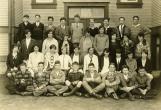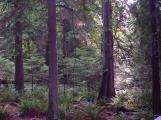1
Life at the LightLiving at the lighthouse was a unique experience for the women and children of light keepers' families.
For children, it was a unique and rewarding, if sometimes isolated, time in their lives. Keepers with school-age children vied for Point Atkinson posting because of the proximity of elementary and high schools. Even though they were closer to settled communities, other young people and school, their children found that living at a lighthouse was still an adventure. Young people were also important helpers in the many duties that make up work at the lighthouse.
Even though it was only men who where hired as light keepers, women have been integral to the upkeep of the light and lighthouses. Wives and daughters supported the keeper by keeping house for the keeper and other lighthouse workers. When the keeper could not afford an assistant, his wife often took on that position for no pay.
3
Being Young at Point AtkinsonJoyce Godard came to Point Atkinson in 1941 when she was sixteen years old. Her mother was hired as a housekeeper to assist the Dawes.
Joyce Godard remembers:
My very first impression was thinking it was a long ways away from the city, but I liked it. I just loved being by the water…. I had a little spot I used to climb up to around onto the cliff when I wanted to be alone.
4
On the boat slip. Norm Dawe is at right.1936
Point Atkinson, West Vancouver, British Columbia, Canada
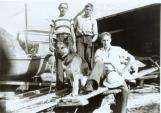 Credits:
Credits:Courtesy of Norm Dawe.
5
For young people, growing up at the lighthouse was a unique experience.Norm Dawe remembers:
It was good, altogether different. You made your own entertainment and of course you are [different] from the normal city kid or town kid. Your entertainment is quite different…fishing even from the time I was just seven years old I would be out in a rowboat. At that time, the Depression was on and rowboat fishing was a way of making a living for a lot of people. They come up from Nanaimo on … [Vancouver] Island from various places by rowboat … and sort of keep an eye on me when I'd be out there in my little skiff.
7
Larry Grafton remembers trips to Vancouver to supply the lighthouse:Dad had an old gas boat and used to go to town and pick up supplies on Saturdays. He used to put the boat into Gore Avenue wharf and shop at Woodward's. Sometimes we used to go … with him, and in the wintertime, he would put a whole bunch of bricks on the back of the stove and get them good and warm and put them in the bottom of the boat so we were nice and warm.
9
Nature was always close by.Larry Grafton remembers:
Bears, cougars, lynx, mink, martin. I remember one time going up the trail to Caulfeild and the hair started standing up on the back of my neck and about twenty feet up, there was a cougar sitting on a limb. I got out of there in a hurry. We used to bump into a lot of bears when we were going to school.
10
A group of friends at a summer gathering at Point Atkinson, c. 1930s.1930
Point Atkinson, West Vancouver, British Columbia, Canada
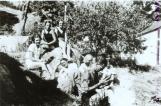 Credits:
Credits:Courtesy of Brian Grafton.
11
The lighthouse was also the setting for fond childhood memories.Larry Grafton remembers:
After we had done our duties, we used to do a lot of swimming. We used to do a lot of cod fishing in the spring of the year and salmon and grills the rest of the summer.
12
Original Cypress Park School, c. 1923. Larry Grafton, back row, second from right.1923
West Vancouver, British Columbia, Canada
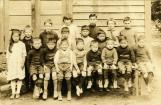
13
Before the military built the road to Point Atkinson and public transportation expanded past Caulfeild, east of the Point, it was a long journey to and from school.Norm Dawe remembers:
I went to Pauline Johnson [school] and my sister to Inglewood junior high… In good weather you would row the boat to Caulfeild and then walk up to the bus stop… If you had a good southeast wind, you couldn't get the boat off, let alone row it. So then you would have to walk and the trail at that time was nothing like it is now. It was a very rugged trail and from above Snug Cove, above Park Lane, there is a very high ridge, sort of a mountain ridge that goes through and the trail comes from Park Lane, half way up Park Lane and you had to go over that ridge, and then down the other side of it. It was quite a walk and you really didn't use that unless there was no other way.
14
Grade 9 class photo of Hollyburn School, West Vancouver.1928
West Vancouver, British Columbia, Canada
